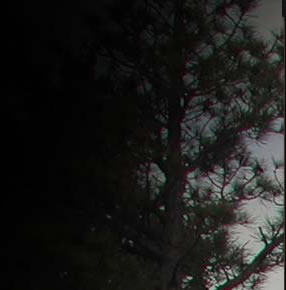
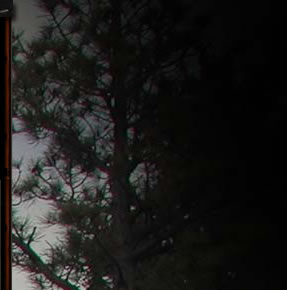

Digital Cameras for Hunting and the Outdoors
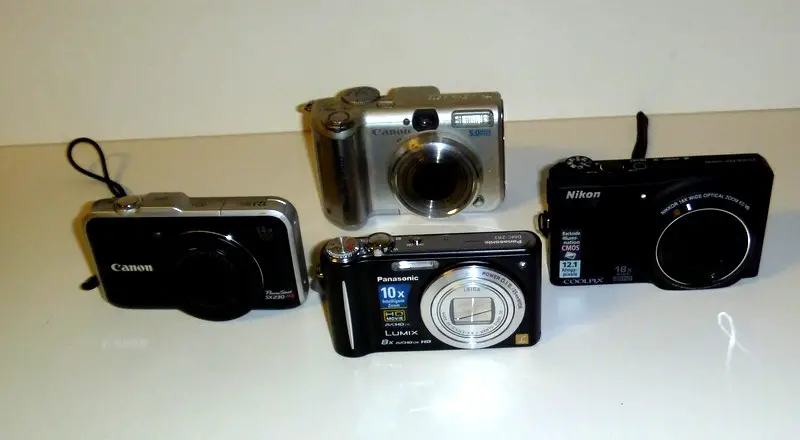
Cameras have changed immeasurably over the years. The Eastman Kodak “Brownie” was introduced back in 1900, with millions of Brownie 127 cameras sold between 1952 and 1967. The Brownie slogan was, “You push the button, we do the rest.” It was in 1948 when Edwin Land introduced the Land camera which became the Polaroid Land Camera. It was in response to daughter Jennifer's question, “Why can't I see them now?”
At one time, it was all the rage, as when I was a kid film often had to mailed away for processing. Three or five weeks later, you finally knew who had their eyes closed or their tongues sticking out. My Dad still has his Polaroid Land Camera. Later, it became a niche market used by realtors and by my mentor, Ed Marlo, as you could approximate half-tones for publishing with a screened adapter.
“Point and Shoot” cameras have always had great appeal. The Kodak Instamatic sold some 50 million between 1963 – 1970. In 1970, the battery-powered flash bulb gave way to the self-contained pyrotechnic wonder, the “Magicube.” The Kodak 110 format Pocket Instamatic came about in 1972, selling 25 million in less than three years. Times have changed, the last film camera I purchased was an Olympus 35mm Quickshooter Zoom, 35-70mm. By today's standards, it is monstrously large and heavy point and shoot, but back then it was living pretty large. We went through grocery bags of film shooting pre-illustrative photographs for several of my earlier books.
Several AA-powered Canon PowerShots are still in the “collection,” with the PowerShot A610 featuring a humble 4x optical zoom and 20 scene modes to go with its 5.0 megapixels. As it turns out, “megapixels” are currently the pet rock of the digital camera world. We like more “mega” everything, but image quality come from lens quality and sensor size, not just cramming more un-needed pixels onto a tiny sensor. The Mega-Pixel Myth still rages rampant, even though 5 megapixels is more than most consumers could ever want or use, even going up to 16 x 24 posters as David Pogue was able to show in the New York Times in February, 2007.
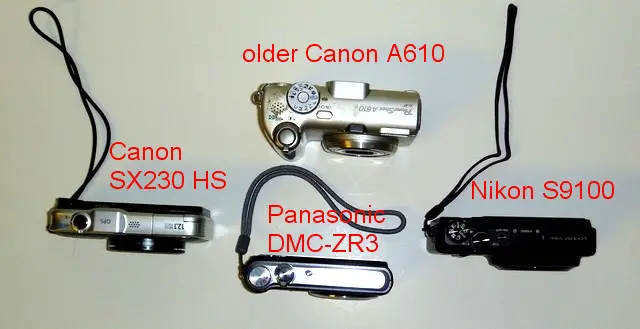
Every couple of years, digital cameras get slimmer, lighter, and more feature-laden. The bulbous old Canon PowerShot A610, long ago retired from the field, looks like odd plastic rock compared to the latest digital pocket cameras, that now actually fit in pockets.
The travel zoom category was more or less pioneered by Panasonic, with the 2006 model Lumix DMC-TZ1. It was the first consumer compact to offer a 10x optical zoom. For the hunter, hiker, outdoors person, it is attractive to have a unit that is handy and pocketable, yet capable of grabbing both a dazzling sunset and having enough magnification to get to whatever wildlife is encountered. In preparation for this little article from an enthusiast's point of view, I spend some quality time with a Panasonic 8x (10x intelligent) zoom DMC-ZR3 made in Japan, a Sony 10x Cyber-Shot DSC-HX5V made in Japan, a Sony 10x Cyber-Shot DSC-HX7V made in China, a Nikon 18x Coolpix S9100 made in Indonesia, and a Canon 14x PowerShot SX230 HS made in Japan.
One “feature,” worthless as far as I'm concerned, is a GPS included with your camera so you can bore people with clumsy maps telling them the coordinates you've been to, or just leave it on and wait for your camera battery to discharge prematurely. It is hard to find products without GPS's, meaning cell phones, binoculars, and even your GPS includes a GPS. It's really dumb, but it is called “geotagging” and it is nevertheless a feature. Of the cameras mentioned, the two Sony's and the Canon all have it. Sony takes the trouble to tell you what direction your camera was pointed in when you took the picture with a digital compass, not exactly "wake the President" material.
The consumer based digital camera, as well as the higher end cell-phones, have extremely small sensors. A 1/2.5 in. sensor is actually 5.3 x 4.0mm. Most of the latest cameras (including the Nikon and Canon) have a 1/2.3 in. sensor, or 6.1 x 4.6mm. None of these camera capture in RAW, minimally processed format that more interested photo-shoppers might prefer, saving the files in JPEG compressed format. All of these cameras capture 720 HD video as well, or better. The importance of that is up to the individual.
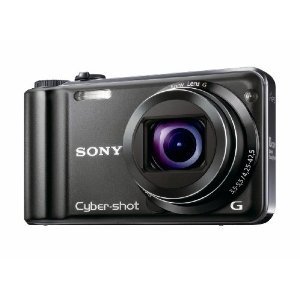
Sony Cyber-shot DSC-HX5V (2010 Model)
Dimensions (WHD) 4.1 x 2.3 x 1.1 inches
Weight (with battery and media) 7.1 ounces
Megapixels, image sensor size, type 10 megapixels, 1/2.4-inch CMOS (backside
illuminated)
LCD size, resolution/viewfinder 3-inch LCD, 230K dots/None
Lens (zoom, aperture, focal length) 10x, f3.5-5.5, 25-250mm
File format (still/video) JPEG/MPEG-4 AVCHD
Highest resolution size (still/video) 3,648x2,736 pixels/1,920x1,080 at
59.94i
Image stabilization type Optical and digital
Battery type, CIPA rated life Li-ion rechargeable, 310 shots
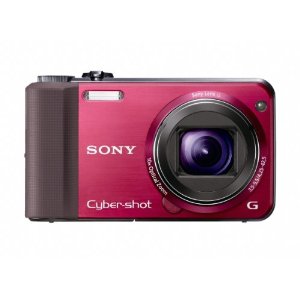
Sony DSC-HX7V
Dimensions
(WHD) 4.1x2.3x1.1 inches
Weight (with battery and media) 7.3 ounces
Megapixels, image sensor size, type 16 megapixels, 1/2.3-inch backside-illuminated
(BSI) CMOS
LCD size, resolution/viewfinder 3-inch LCD, 921K dots/None
Lens (zoom, aperture, focal length) 10x, f3.5-5.5, 25-250mm (35mm equivalent)
File format (still/video) JPEG/AVCHD (.MTS); MPEG-4 AVC/H.264 (.MP4)
Highest resolution size (still/video) 4,608x3,456 pixels/1,920x1,080 at
60fps (interlaced; 24Mbps)
Image stabilization type Optical and digital
Battery type, CIPA rated life Lithium ion rechargeable, 300 shots (charged
in camera)
While stylish and GPS-equipped, the Sony DSC-HX7V was just too darn slow to be considered as a field camera that you might want to call into action at a moments notice. The video mode was remarkably sluggish as well, taking 5-6 seconds before recording could begin after hitting the "instant record" button. Its 2010 predecessor, the DSC-HX5V, is the better shooting camera.
Going down the line, it is easy to eliminate cameras in my terms, although obviously different folks (including the many fine dedicated photophile sites) don't always agree. The Sony Cyber-Shot DSC-HX7V is close to a disaster, as it is turtle slow. I was able to get reasonably good output, but the camera is like a slow laptop with a lens, insisting on processing and saving at an irritatingly slow pace. It is even worse when attempting video, as it takes as much as 6 seconds before it so much as starts recording. Despite other gimmicks, like 3D shooting and a very good LCD display, this camera is just too slow to be a worthy hunting or outdoor companion. The previous version, the Sony DSC-HX5V, while considered pricey when first released, is a far more competent camera in general and worth a look if you can find it at discount.
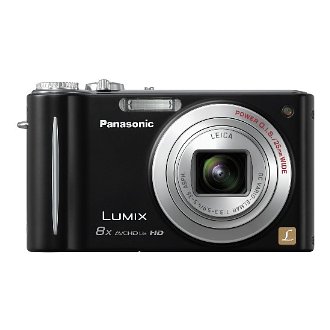
Panasonic Lumix DMC-ZR3
Dimensions
(WHD) 2.2x3.9x1 inches
Weight (with battery and media) 5.6 ounces
Megapixels, image sensor size, type 14 megapixels, 1/2.3-inch CCD
LCD size, resolution/viewfinder 2.7-inch LCD, 230K dots/None
Lens (zoom, aperture, focal length) 8x, f3.3-5.9, 25-200mm (35mm equivalent)
File format (still/video) JPEG/AVCHD Lite (MTS), Motion JPEG (MOV)
Highest resolution size (still/video) 4,320x3,240 pixels/1,280x720 pixels
at 30fps
Image stabilization type Optical and digital
Battery type, rated life Lithium ion rechargeable, 330 shots
I purchased the “Panasonic Lumix DMC-ZR3 14.1 MP Digital Camera with 8x Optical Image Stabilized Zoom and 2.7-Inch LCD” in June of 2011 for about $167. Since then, prices have crept to about $200, although there are newer models (Panasonic DMC-FH25K 16.1MP Digital Camera with 8x Wide Angle Image Stabilized Zoom and 2.7 inch LCD) that can be had for $140 or so as of this writing. Slightly smaller and lighter than the rest, it is fast and takes excellent pictures in the “dummy mode,” my favorite mode. Though lacking the zoom range of the Canon and the Nikon, not having as large or as crisp of a screen, its long battery life (330 shots) and virtually fool-proof operation make it an excellent, reliable choice for the money.
That leaves the two most feature-laden finalists, the Canon PowerShot SX230 HS and the Nikon Coolpix S9100 to discuss. Both have upgraded, larger and crisper LCD screens. Technically, this is how they stack up, using essentially the same sensors.
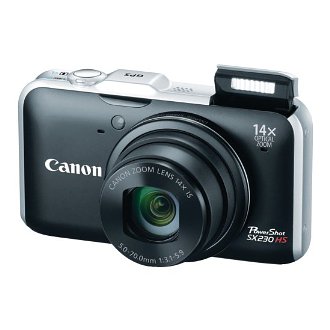
CANON SX230 HS 12.1 effective Megapixels (BSI-CMOS sensor)
Dimensions (WHD) 4.2 x 2.4 x 1.3 inches
Weight (with battery and media) 7.9 ounces
Megapixels, image sensor size, type 12 megapixels, 1/2.3-inch backside-illuminated
CMOS
LCD size, resolution/viewfinder 3-inch LCD, 460K dots/None
Lens (zoom, aperture, focal length) 14x, f3.1-5.9, 28-392mm (35mm equivalent)
File format (still/video) JPEG/H.264 (.MOV)
Highest resolution size (still/video) 4,000x3,000 pixels/ 1,920x1,080
at 24fps
Image stabilization type Optical and digital
Battery type, CIPA rated life Li ion rechargeable, 210 shots
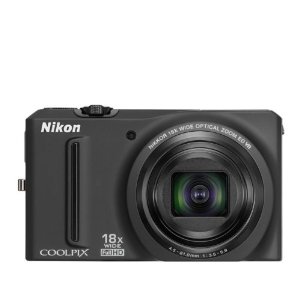
NIKON S9100 12.1 effective Megapixels (BSI-CMOS sensor)
Dimensions (WHD) 4.2 x 2.5 x 1.4 inches
Weight (with battery and media) 7.6 ounces
Megapixels, image sensor size, type 12 megapixels, 1/2.3-inch backside-illuminated
CMOS
LCD size, resolution/viewfinder 3-inch LCD, 921K dots/None
Lens (zoom, aperture, focal length) 18x, f3.5-5.9, 25-450mm (35mm equivalent)
File format (still/video) JPEG/MPEG-4 AVC H.264 (.MOV)
Highest resolution size (still/video) 4,000x3,000pixels/ 1,920x1,080 at
30fps
Image stabilization type Mechanical and digital
Battery type, CIPA rated life Lithium ion rechargeable, 270 shots (charged
in camera)
The appeal of the Nikon is its 18x zoom compared to the 14x of the Canon. The Canon has a GPS, although a poor rendition of it. The Nikon is a bit faster, while the Canon does slightly better in high-ISO, low light applications. The Nikon shoots continuous drive at 9.5 fps compared to 3.2 fps for the Canon.
Both have sharp LCD screens, the Canon a bit unusual in that it is a 16:9 aspect screen, more helpful for video than stills. Battery life is rated at 270 pictures for the Nikon vs. 210 for the Canon with the Canon's GPS turned off. Canon supplies you with a handy external charger, where the Nikon as supplied charges the battery in the camera (as did the sea-slug Sony HX7V). Extra batteries are invariably a good idea, but you'll need to buy a charger as well for the Nikon (and the Sony HX7V) if you want to continue to use your camera.
I shot the above video entirely with the Canon SX230 HS at the 2012 SHOT Show, demonstrating its 240 fps slow-motion capabilities as well as Winchester PDX1 Defense Ammunition.
For video, the Nikon shoots full-blown 1080p HD @ 30 fps, while the Canon stops at the inexplicable film frame rate of 24 fps. Both have fun and very usable slow-motion (240 fps) video modes as well, with the Canon's modes a bit easier to navigate to. Although the Nikon is better-handling in my view, it has build-quality issues. There is significant roughness, vibration, and noise when zooming, compared both to the smooth and silent Canon SX230 and the simpler Panasonic DMC-ZR3.
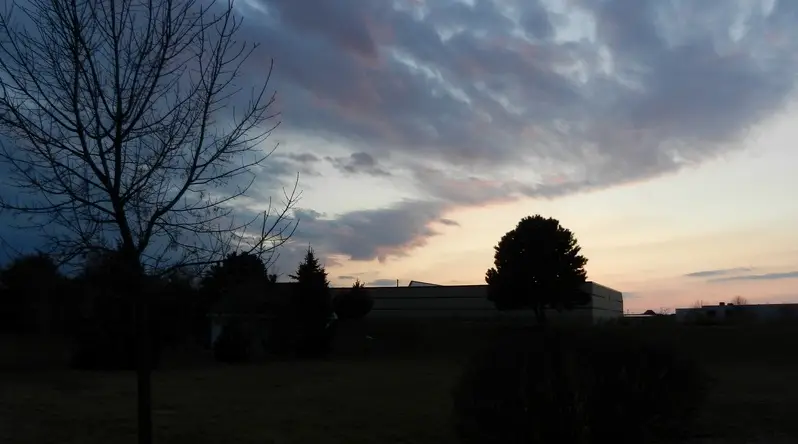
Both the Nikon "Night Landscape Hand-Held" mode (above, my back yard) and the Canon SX230 HS (below) did a fine job with dusk / sunset photos, with an edge to the Canon in overall low-light performance.
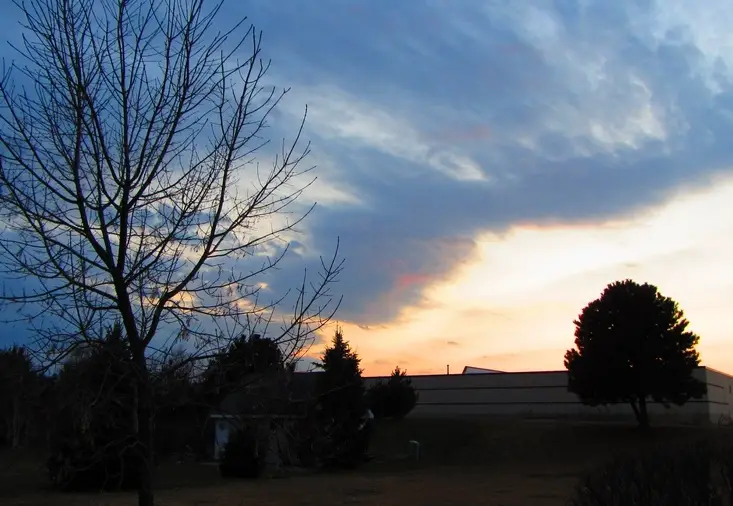
If you are on a budget and like the idea of long battery life, the Panasonic DMC-ZR3 (or similar Lumix models) fits the bill with an easy and effective intelligent auto mode. For a true 14x optical zoom range, more manual controls, the best low-light images of the group, along with a GPS of dubious value, the Canon SX230 HS wins this match-up on the basis of both features, performance, and build quality. Its battery life is a concern, particularly when shooting video or with the GPS engaged, so for most folks a second fully-charged battery at the ready will be mandatory. The SX230 is a thoroughly satisfying hunting and outdoors companion with little question.
The above video, "54 Illinois Geese," was shot with the Canon SX230HS in 1280 x 720 30fps mode. Wind reduction was engaged, but it is only of partial effectiveness. While not up to the level of dedicated digital camcorders, considering the primary focus (pun intended) of this 6.9 oz. camera is still photos, it does an admirable job.
If you're not in need of an outdoor camera immediately, the latest 2012 releases are only a month or so away, with March-April releases fairly typical. Meaning, the "Panasonic Lumix SZ7 14.1 MP High Sensitivity MOS Digital Camera with 10x Optical Zoom" @ $199 retail that adds the HS MOS sensor, a larger / higher resolution LCD screen, etc., the Panasonic Lumix DMC-ZS20 ($349 MSRP), and the "Canon PowerShot SX260 HS 12.1 MP CMOS Digital Camera with 20x Image Stabilized Zoom" that punches the SX230 HS out to a whopping 20X zoom @ $349 retail might be worthy of your consideration.
In general, you'll likely want a 3 inch LCD screen with 460,000 pixels (as opposed to the standard 230,000 arena screens) that don't washout in sunlight as bad lower resolution, generally speedy start-up, and response time. Extra batteries are essential, particularly when cold weather is involved, or if you do substantial video with your pocket cameras. Memory prices have come way down, so a Class 10 16GB SDHC card is often appropriate and affordable. Touch screens don't do well for outdoor use and if you are going to be working with gloved hands (or have large fingers) the smallest of the sub-compacts may be cumbersome to use for you.
There are a few incidentals normally not covered that you might wish to consider. If you are an active shooter, you'll eat batteries. Cameras with in-camera charging can take as much as 8 or 9 hours to recharge. Standalone chargers often fare better, but that varies by brand. For example, the Sony wall charger included with the DSC-HX5 puts out a pathetic .25 amps, so despite the "advantage" of a wall charger you might be looking at a solid five hours to charge one battery. The Canon charger from the SX230 HS puts out .70 amps, the Panasonic DMC-ZR3 supplied charger is rated at .65 amps.
To charge a a couple of batteries for the Sony may well be a 10 hour project. In that same time, you could charge up five fully depleted Canon batteries. This is the type of hassle normally not taken into consideration when checking camera specifications.

Canon SX230

Panasonic DMC-ZR3

Sony DSC-HX5V
Above: Canon SX230, Panasonic DMC-ZR3, Sony DSC-HX5V all shot in "burst" mode at full zoom. The Canon has a 3 meg continuous drive mode @ 14X optical. The Panasonic has a 3 meg burst that is slower, but also continuous. The 8X Panasonic "smart-zooms" to 10X, the Sony doing the same thing to 14X. The Sony burst mode was used @ 5 meg, takes ten pictures in one second, but then stalls to process them so your burst is over and about everything else until the slow processing completes.
Sample images of a cooperative robin are shown above. All were full images, resized identically at 400 x 300, 90% JPEG quality, shot with the respective burst modes. The three sample images that follow were all shot with each camera's artificial intelligence, or "dummy mode," sized to 640 x 480, saved at 95% JPEG quality.

Canon SX230

Panasonic DMC-ZR3

Sony DSC-HX5V
In this second set of robin samples, all shot in auto mode / full zone, the Sony had a rough time focusing on the bird, while the Canon and the Panasonic gave very quick, satisfactory results. While no artificial intelligence mode / autofocus gets it right all the time, the Canon and the Panasonic both got it right the vast majority of the time, and better than the Nikon or Sony units could. All of these cameras can take excellent pictures under good lighting conditions; many digital cameras do. The biggest differences are in handling, build quality, shooting speed, low-light, video ability, battery charging, scene modes, LCD screen quality, IA algorithms, and PC connectivity.
The Losers: Nikon S9100 for poor build quality, very poor video, and sounding like a tractor when you operate the zoom. The Sony HX7V for truly sea-slug slow shooting performance.
Middle of the Road: The Sony HX5V, while connecting to your PC with a truly wacky proprietary Sony adapter, often takes very good pictures, is well-built, but is still noticeably slow compared to the Panasonic and Canon. The Sony automatic, self-stitching Panorama Mode works beautifully, but is of little practical value outside of website or e-mailed images.
The Winners: The Canon SX230 for speedy performance, manual controls, effective scene modes, outstanding stereo HD video, with its poor battery life only primary area of concern. Overall, the Canon SX230 is easily the best in its class. The Panasonic DMC-ZR3 wins for its slimness, responsiveness, very low price, and excellent battery life. Note that the more current, but similarly performing Panasonic DMC-FH25K model is quite a bargain at $140 street price. Its low-resolution LCD screen is the primary weakness that might drive you to an upscale model Panasonic, or to the Canon for more zoom, manual controls, and better video as well.
Copyright 2012 by Randy Wakeman. All Rights Reserved.

Custom Search



